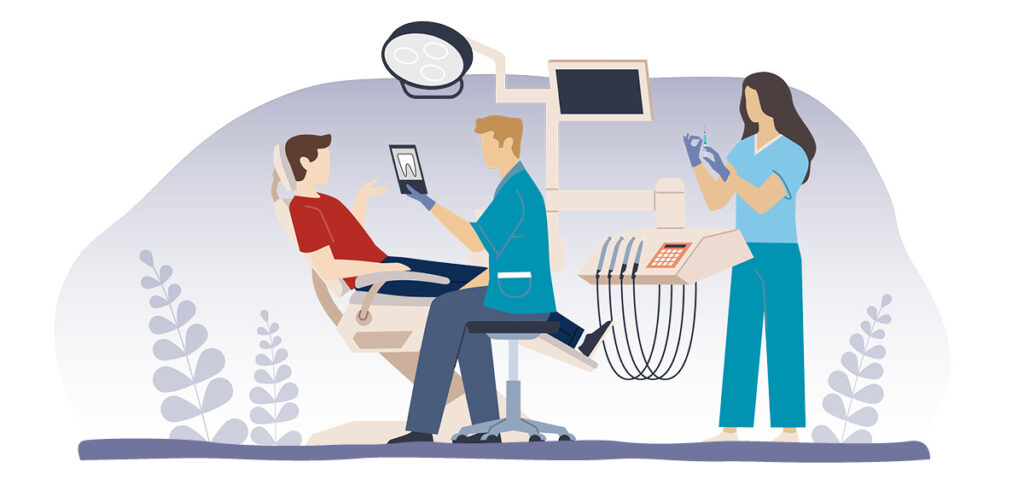 Know about cavitations and your risks
Know about cavitations and your risks
Everyone knows what a cavity is, but most don’t know what a cavitations is. It’s a lesion within the jawbone sometimes caused by decreased blood flow. They can occur when a section of bone dies and creates a hole (lesion) in the jawbone that harbors toxins and bacteria.
Because every organ in the body is connected through the bloodstream, harmful bacteria in the mouth can travel and injure other organs. Chronic inflammation triggers the body’s inflammatory response, allowing bacteria to enter the bloodstream, sometimes travelling to the heart, brain, digestive tract and more.
One way to keep yourself safe is by understanding whether you’re at risk, how cavitations are diagnosed and treated. First, let’s discuss a little about their history.
What medical research has taught us about cavitations
The term cavitation was coined in 1930 by a well-known orthopedic researcher G.V Black. He was intrigued by the body’s unique ability to produce extensive jawbone destruction without causing redness or swelling. This caused him to look into what caused the damage and give it a name.
In 1992 Bouquot, et. al. observed intraosseous (internal bone) inflammation in patients with severe facial pain and coined the term Neuralgia-inducing cavitational osteonecrosis (death of bone) or NICO.
In 2014 Adams, et. al. coined the term Chronic Fibrosing Osteomylelitis (CFO) in his position paper.
Why is this important? Because many dentists today do not recognize the term cavitation but will use nonunion or necrosis of the jawbone. No matter what we call it, it’s clear that cavitations and the hidden harmful bacteria and inflammation it causes can lead to damage throughout the body.
One of the real dangers is cavitations may not exhibit noticeable symptoms. Some instances may show signs typical of an abscess; fever, swelling, redness and pain – but some are painless. And the lesions cannot be detected with visual inspections.
Are you at risk?
Research demonstrates that anyone who has had implants, root canals, crowns, tooth extractions, dental trauma, dental material sensitivity, periodontal diseases are risk factors for cavitations. Those with low immunity, clotting risk, mineral deficiencies, autoimmune conditions, or cancer are at further risk.
Bob Jones the inventor of CAVITAT (an ultrasound designed to detect and image cavitations) found that up to 45% of dental cavitations are found at wisdom teeth extraction sites. This is alarming since a large percentage of the population had this procedure when they were 17-21 years of age.
Additional symptoms of cavitations are migraines, trigeminal neuralgia, tinnitus, autoimmune disease, Hashimoto thyroiditis, chronic fatigue, chronic sinusitis, phantom tooth pain and autonomic disturbances.
Diagnosing cavitations
This can be tricky, so it is important that you choose a biological dentist that specializes in cavitations to be involved in your care.
Cavitations do not appear in the regular 2D X-rays that you get yearly at your checkup. Cone-Beam Computed Tomography (CBCT) radiographs or 3D cone beam scan (for short) must be used for diagnosis.
Another diagnostic test is CytoDx blood test for inflammatory markers, typical of jawbone cavitations.
Thermography can also identify inflammation within the sinus and jaw. However, it does not show definition of the area which is necessary if inflammation is present. In that case, a CBCT would be required.
Treatment
If you are concerned about your dental history and current oral health status, we at Edge can direct you to appropriate testing and biological dentistry. If cavitations are noted with your exam we have standard of care protocols to assure proper preconditioning prior to treatments and detoxification strategies post procedure.
Keep in mind that good oral hygiene and consistent checkups with a dentist can help maintain oral and overall health. Brush and floss at least twice a day and limit sugary snacks. You should also include good health practices, such as good nutrition, consistent exercise and working with a health care professional to optimize your health.







